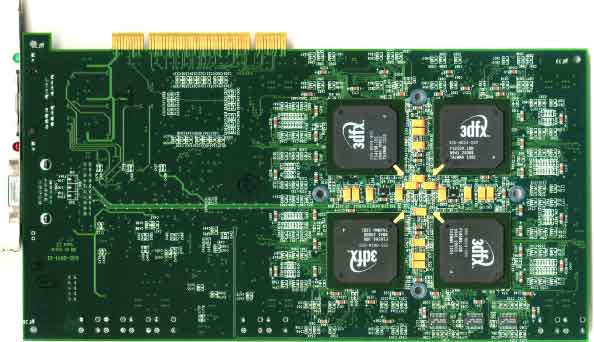Hi Hank,
I would like to ask you a question about VSA-100 architecture.There is one thing that leaves me puzzled. Why 3dfx changed their texture/pipelines ratio? out of Voodoo 1 , all next chips were like
2TMU on each pipeline, which allows single pas multitexturing(for example Voodoo 3 = 1 pipeline/2TMU). So why VSA-100 didn´t follow this scheme ? it might have been 2pipes/each with 2TMU´s = 333Mpix/666Mtex. I think it would hepl performance of VSA 100 dramatically.
In this interview back in 1999 Scott Sellers says:
So why 3dfx did not "stitched" two Voodoo 3 pixel pipelines adding 32Bit color, High-rez textures support and T-Buffer thing
So was there any reason to change the scheme ? perhaps size of chip, or incompatibility with T-buffer, or what else
I will do appreciate any suggestion about that.
thank you
regards Daniel
I would like to ask you a question about VSA-100 architecture.There is one thing that leaves me puzzled. Why 3dfx changed their texture/pipelines ratio? out of Voodoo 1 , all next chips were like
2TMU on each pipeline, which allows single pas multitexturing(for example Voodoo 3 = 1 pipeline/2TMU). So why VSA-100 didn´t follow this scheme ? it might have been 2pipes/each with 2TMU´s = 333Mpix/666Mtex. I think it would hepl performance of VSA 100 dramatically.
In this interview back in 1999 Scott Sellers says:
Quotethat it appears based on their spec sheets and functionality that the GeForce's 256 raster engine is likely 2 TNT2 pixel pipelines put in parallel. Clearly, the geometry capability is brand new for GeForce, but it appears as though the raster functionality is virtually identical to the TNT2 raster engine (except it's obviously doubled in width and they've also added cube environment mapping...http://www.guru3d.com/tech/editorials/210999/index2.shtml
So why 3dfx did not "stitched" two Voodoo 3 pixel pipelines adding 32Bit color, High-rez textures support and T-Buffer thing

So was there any reason to change the scheme ? perhaps size of chip, or incompatibility with T-buffer, or what else

I will do appreciate any suggestion about that.
thank you
regards Daniel


